Grand Central Terminal is one of the most iconic landmarks in New York City. From its early days as a train station to its current role as a cultural and commercial center, Grand Central plays a vital role in the life of the city. A visit to Grand Central is a must do on any trip to New York, not just to take a train or to marvel at its beatiful structure, but also to experience some really fun secrets that are hiding in plain sight for all to see.
From its ceiling which is actually painted backwards, to its majestic windows are also walkways for employees, there is much to marvel at in Grand Central. Lets take a closer look at 12 of my favorite secrets that I have learnt about Grand Central over the years.
Table of Contents
History of Grand Central
Grand Central Terminal has been a transportation hub since 1913, where it was built on the site of the previous Grand Central Depot, which was opened in 1871. The construction of Grand Central Terminal, which is designed in Beaux-Arts style, started in 1903 and was completed on February 2, 1913.
Cornelius Vanderbilt, a prominent businessman and railroad tycoon, was instrumental in the development of Grand Central Terminal, which was one of the largest and most expensive construction projects of its time. He was the founder of the New York and Harlem Railroad, which was one of the first railroads in the United States.
Grand Central Terminal has played a significant role in the history of New York City. It was the gateway to the city for millions of immigrants who arrived in the United States in the early 20th century. During World War II, the terminal was used to transport troops and supplies to the front lines. In the 1950s and 1970s, there were two separate proposals to demolish Grand Central Terminal, though both were unsuccessful.
In the 1960s, Grand Central Terminal was in a state of disrepair and needed extensive renovation. Jacqueline Kennedy Onassis, a former first lady of the United States, played a key role in saving the terminal from being demolished. She led a public campaign to preserve the terminal, which resulted in the passage of the Landmarks Preservation Act of 1965. The act protected the terminal from demolition and ensured that it would be preserved for future generations.
Today, Grand Central Terminal is a bustling transportation hub that serves millions of commuters and tourists every year, and is a toursit destination for all that it has to offer, including dining, shopping, art, events and more. It has undergone extensive renovation and restoration over the years, including the restoration of the iconic ceiling in the main concourse. Located on 42 Street, Grand Central offers stunning Beaux-Arts architecture, bustling crowds, and a rich history, and it is a favorite of New Yorkers and visitors alike with all there is to see and do there.
Grand Central is the largest train station in the world by number of platforms and area, with 44 platforms serving 67 tracks along them set on 49 acres. The terminal serves commuters traveling on the Metro-North Railroad to destinations in New York State, Connecticut, and New Jersey, to Long Island through a new addition called Grand Central Madison, and within New York with various subway lines running through it.
1. Grand Central Windows are Walkways for Employees
The large windows on two sides of Grand Central are actually walkways that employees use to get from one end to the other without needing to deal with the commuters or tourists! Here are a couple of videos I have taken of people walking through the windows, which I hope I get to do at least once.
This video actually has two people walking at different levels from right to left. The iconic opal Grand Central Clock above the information booth is in view in the videos.
This video has a person walking at the lowest level in the windows, and you can see them walk from left to right in it.
2. The Ceiling is Painted Backwards
It is easy to tell the commuters from the tourists in Grand Central based on where they are looking – commuters are focused on the schedules, while tourists are usually transfixed by the sight of the ceiling, which has 12 constellations with 2500 stars painted on it. A little known fact is that the ceiling is painted backwards, which Cornelius Vanderbilt, as the original founder, claimed was so the zodiac could be viewed from a divine perspective rather than a human one.

3. Dirty Brick in the Grand Central Ceiling
If you look closely at the area near the Cancer – Crab – in the ceiling, which is at the bottom left section in the picture above, there is a dirty brick which was left as is to show how dirty the ceiling was before it was cleaned in the 1990s. This ‘dirt’ was 70% caused by nicotine and tar from the time that smoking was allowed indoors!!
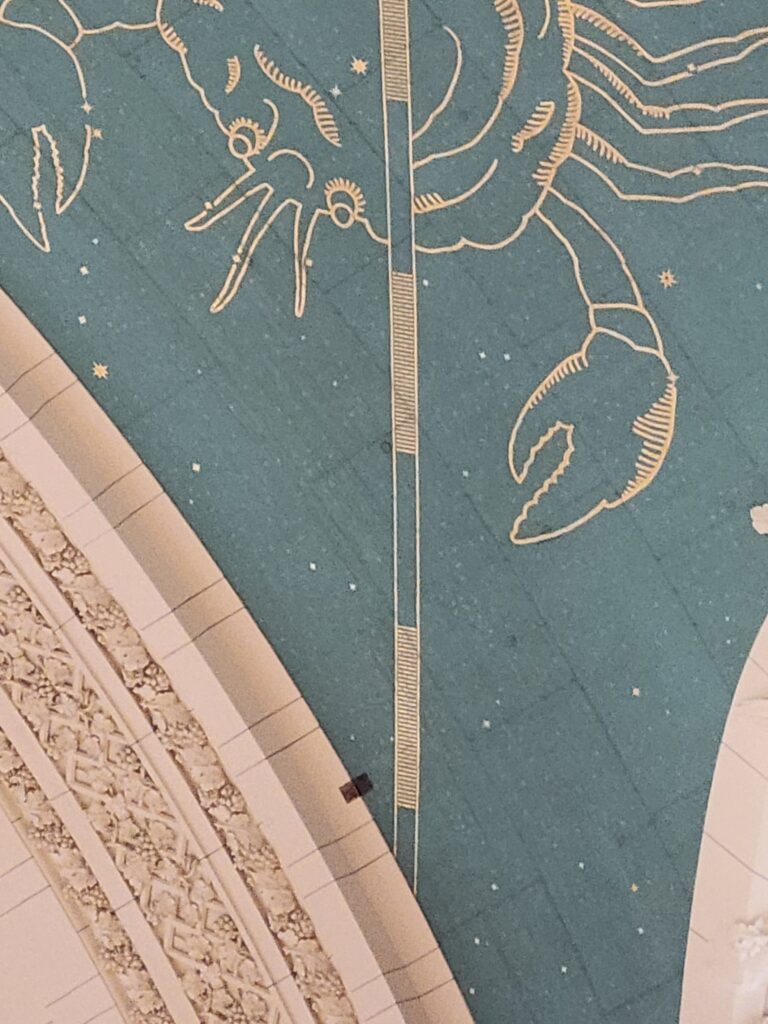
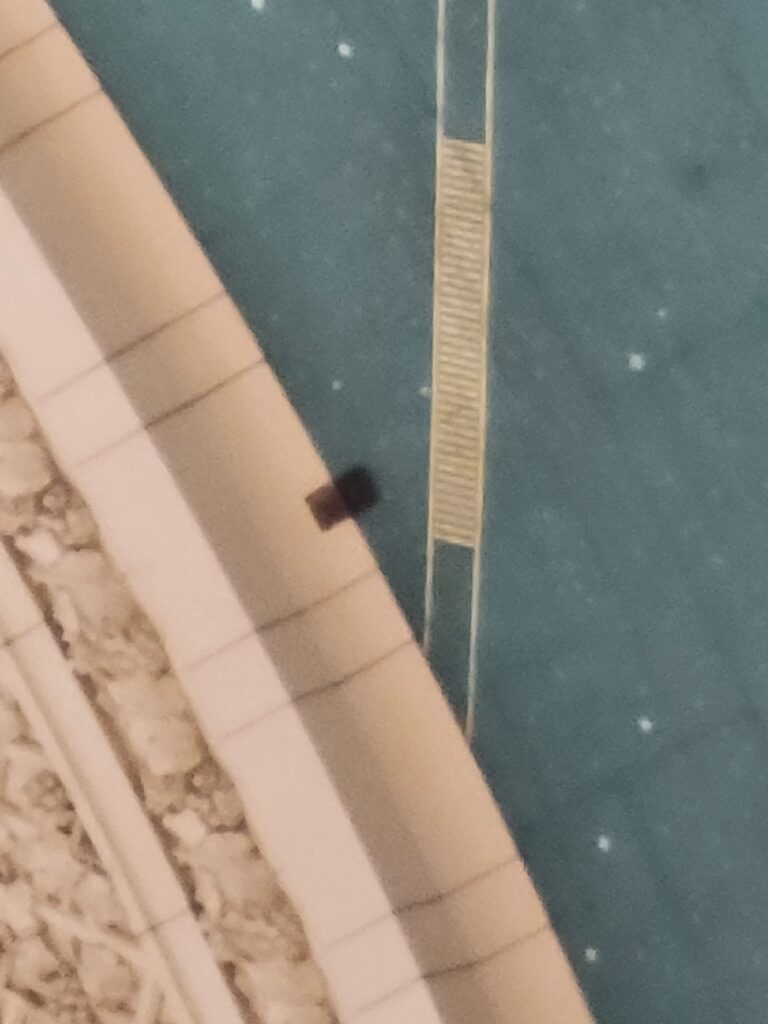
4. Clock on the Grand Central Information Booth
The clock on the information booth is made of opal. and is estimated to be worth $20 million!!!

5. Hidden Stairwell in the Information Booth
While we’re on the information booth, I was fascinated to learn that the pillar inside the information booth is actually a staircase that employees use to go to the lower level of Grand Central! In the picture on the left below, you can see what it usually looks like all the time, and on the right is the one time I actually saw it open in all the times I have visited Grand Central.

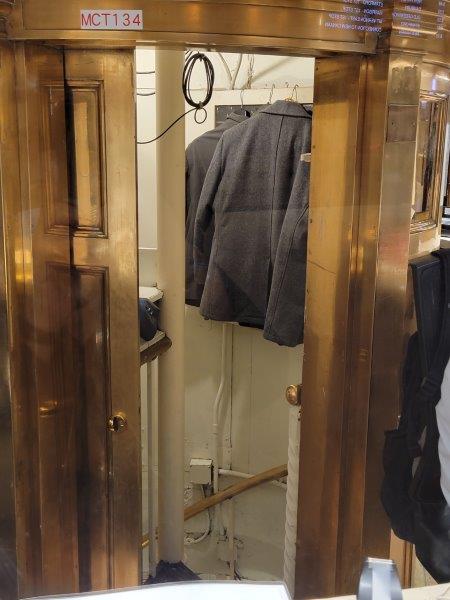
6. Grand Central Whispering Gallery
The low arches as you head to the lower level at Grand Central actually have a Whispering Gallery, where you can whisper something in one corner, which can be heard by someone at the opposite corner. It really is fun to do this, and yes I am speaking from experience.

7. Exposed Light Bulbs
I had never noticed this till I heard about it, and it is all I see now that I am in the know – every single light bulb in Grand Central is bare and exposed! The Vanderbilts as the founders of Grand Central wanted to show off this new invention called electricity when Grand Central was built.
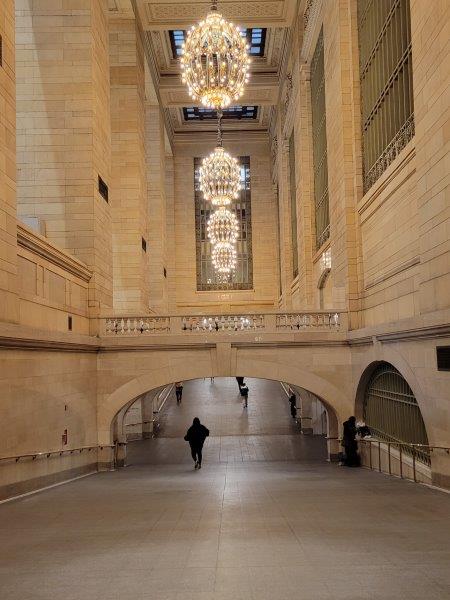
8. Tiffany Clock
Outside Grand Central is a Tiffany Clock that is the largest Tiffany Glass in the world with a diameter of fourteen feet, and is adorned with the Greek Gods Mercury for speed, Hercules for strength, and Minerva for intellect.
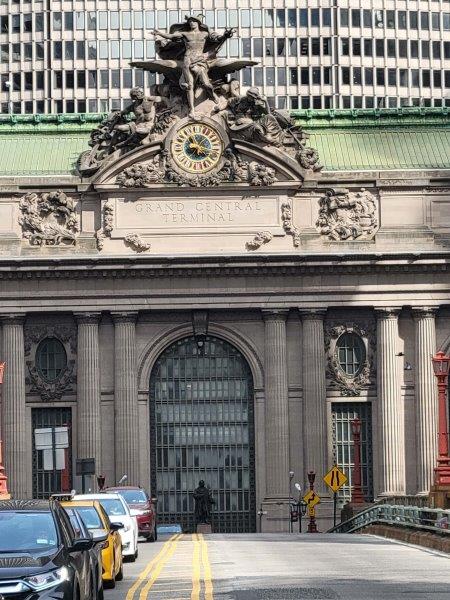
9. Mural in the Graybar Passage
The Graybar Passage in Grand Central has a fantastic mural by Edward Trumbull with a depiction of trains and skyscrapers. Trumbull is well known in New York for his mural in the Chrysler Building lobby, and here’s another one that most people don’t even know exists in plain sight if you know where to look for it.
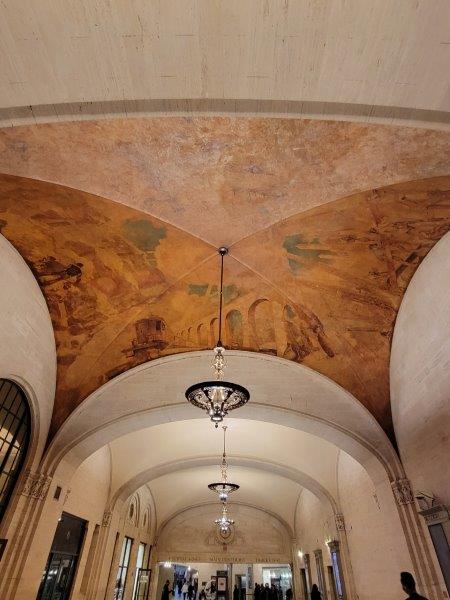
10. Rats at the Graybar Passage Entrance
Speaking of the Graybar Passage, one of the interesting features at its entrance on Lexington Avenue is rat sculptures on the cables outside made to look like they are trying to get in, and are thwarted by conical structures at the top. I understand these are designed to resemble mooring lines of a ship, though at the very top the design looks like heads of rats that did manage to get in after all.
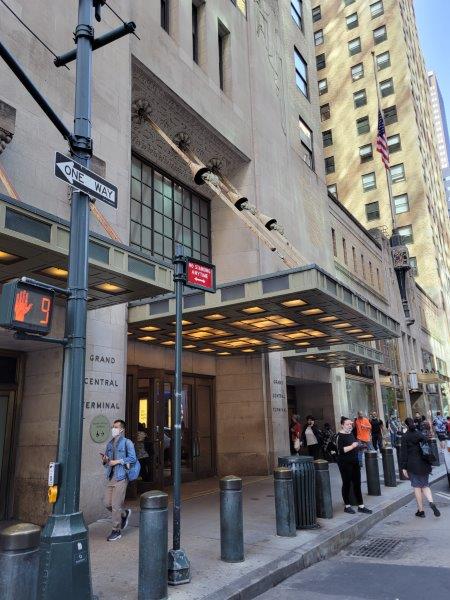
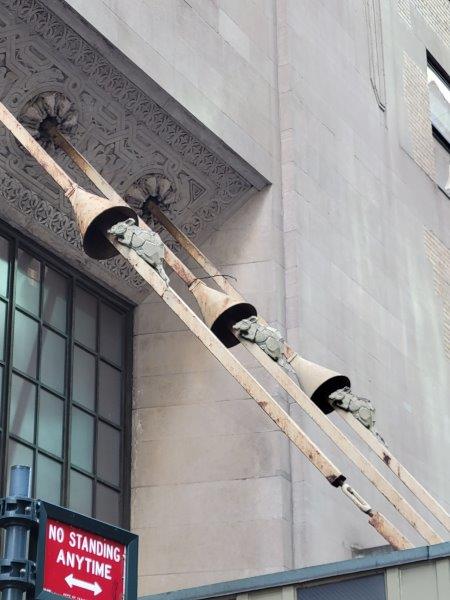
11. Mural inside a Wine Store
There’s a mural inside a wine store next to Track 17, which is said to have been rediscovered during the Grand Central renovation. This was originally a movie theater.
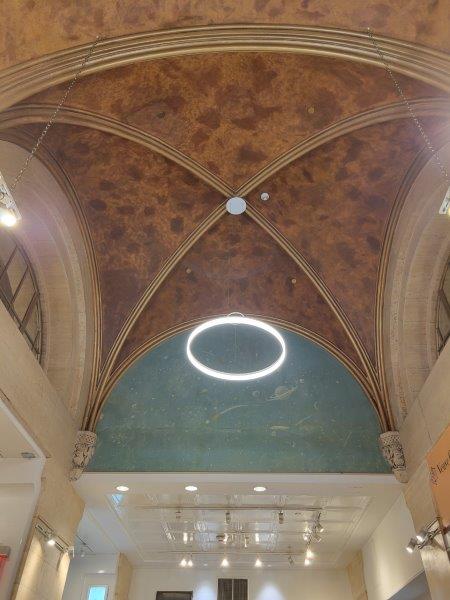
12. The Campbell Bar
The Campbell Bar, which was originally the office and reception hall of Jazz Age financier John William Campbell, has evolved to become a bar that at Grand Central. Walking in is like stepping back in time as it has 25-foot hand-painted ceilings inspired by thirteenth-century Florentine style and features a stone fireplace, a long mahogany bar, and plush leather seating. It is a beautiful and elegant space that exudes sophistication and charm. It is a great option to stop and have a drink if you are visiting Grand Central.

Closing Thoughts
Gand Central is a beloved landmark in NYC, and one that is definitely worth planning some time for, whether you plan to actually take a train from here or not. All the secrets mentioned here are all hiding in plain sight, and amazing to experience when you visit. From its awe inspiring ceiling to its whispering gallery, and all the options for food, entertainment and shopping, it has something to offer for visitors of all ages, both New Yorkers and tourists alike.



